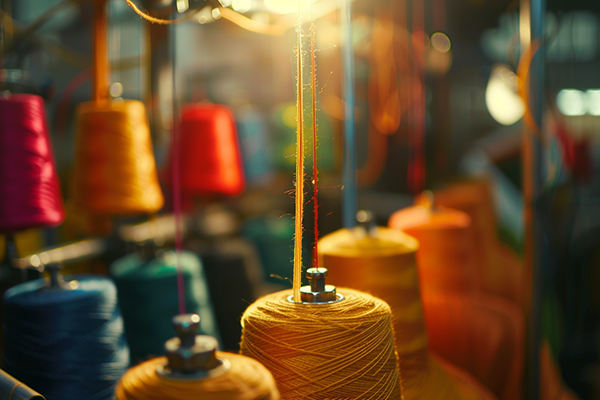The global clothing industry is vast and highly competitive, with some countries dominating production due to their advanced infrastructure, skilled labor, and cost advantages. Among them, one country consistently leads the pack in terms of the number of manufacturers and their output: China1. But what makes China such a manufacturing powerhouse, and how does it compare to other nations?
China has the most clothing manufacturers in the world, thanks to its robust infrastructure, skilled labor force, and ability to produce garments at scale for both fast fashion and luxury markets.
This article delves into the scale of China’s manufacturing industry, examines its role in global clothing production, and compares it with other major players.
How Many Clothing Manufacturers Are There in China?
China’s clothing manufacturing sector is unparalleled in size, making it the world’s largest exporter of apparel.
As of recent estimates, China is home to over 100,000 clothing manufacturers1, producing billions of garments annually.

Why China Leads in Manufacturing
Several factors contribute to China’s dominance in the global clothing manufacturing industry:
-
Economies of Scale
- China’s large-scale factories can produce massive volumes of clothing at competitive prices.
- Its extensive supply chain supports everything from raw materials to finished products.
-
Skilled Workforce
- Millions of workers with expertise in garment production ensure quality and efficiency.
-
Advanced Infrastructure
- Modern factories, ports, and logistics networks support swift production and delivery.
-
Versatility
- Chinese manufacturers cater to various markets, from fast fashion to luxury apparel.
| Factor | Why It Matters |
|---|---|
| Economies of Scale | Reduces production costs |
| Skilled Workforce | Ensures high-quality manufacturing |
| Advanced Infrastructure | Supports efficient supply chains |
| Versatility | Meets diverse market needs |
Industry Output
- Export Volume: China accounts for approximately 31% of the world’s total clothing exports2, supplying major markets like the U.S. and Europe.
- Annual Revenue: The textile and apparel industry in China generates over $300 billion annually.
China’s unmatched capacity and output solidify its position as the leader in clothing manufacturing.
How Does China Compare to Other Countries?
While China dominates the global clothing industry, other nations also play significant roles. Here’s how China stacks up against competitors:

Bangladesh
-
Strengths:
- Known for producing low-cost garments, especially for fast fashion brands.
- Major exporter of t-shirts, denim, and basic apparel.
-
Market Share: Accounts for about 7% of global clothing exports3.
Vietnam
-
Strengths:
- Offers high-quality apparel with competitive labor costs.
- Popular for sportswear and outdoor gear.
-
Market Share: Makes up approximately 6% of global clothing exports4.
India
-
Strengths:
- Specializes in textiles like cotton, silk, and embroidery.
- Known for handmade and traditional garments.
-
Market Share: Contributes about 4% of global clothing exports.
Turkey
-
Strengths:
- Proximity to European markets for faster delivery.
- High-quality fabrics and mid-range apparel.
-
Market Share: Approximately 3% of global clothing exports.
| Country | Strengths | Market Share |
|---|---|---|
| China | High capacity, diverse markets | 31% |
| Bangladesh | Low-cost production | 7% |
| Vietnam | Quality and affordability | 6% |
| India | Textile expertise, handmade garments | 4% |
| Turkey | Proximity to Europe, quality fabrics | 3% |
While competitors offer niche advantages, China’s sheer scale and versatility keep it at the forefront of the industry.
Why Is China the Preferred Choice for Clothing Brands?
Many international brands, from fast fashion giants to luxury labels, rely heavily on Chinese manufacturers. Here’s why:
1. Complete Supply Chain
China’s integrated supply chain5 includes raw material production, textile weaving, dyeing, and garment assembly, reducing lead times and costs.
2. Customization and Innovation
Chinese factories are highly adaptable, producing custom designs and incorporating advanced technologies like 3D knitting and laser-cutting.
3. Cost Efficiency
Despite rising labor costs, China’s productivity and infrastructure keep overall production costs competitive.
4. Quality Assurance
Many manufacturers meet international standards, ensuring consistent, high-quality output.
| Reason | Benefit to Brands |
|---|---|
| Integrated Supply Chain | Reduces lead times and costs |
| Customization | Supports unique designs |
| Cost Efficiency | Offers competitive pricing |
| Quality Assurance | Ensures consistent quality |

The Future of Clothing Manufacturing in China
While China remains the global leader, the industry is evolving due to economic and environmental factors.
1. Sustainability
Manufacturers are adopting eco-friendly practices, like water-saving dyeing techniques and recycled materials.
2. Rising Labor Costs
Some factories are automating processes or relocating within China to maintain competitiveness.
3. Global Trade Dynamics
Trade tensions and diversification encourage brands to explore alternative sourcing options while still relying on China’s infrastructure and expertise.
| Trend | Impact on Manufacturing |
|---|---|
| Sustainability | Appeals to eco-conscious brands |
| Rising Labor Costs | Encourages automation |
| Trade Diversification | Reduces over-reliance on one market |
China’s adaptability to these trends will shape its continued dominance in the global apparel industry.
Conclusion
China stands as the undisputed leader in global clothing manufacturing, housing over 100,000 factories producing garments for markets worldwide. Its economies of scale, skilled workforce, and advanced infrastructure outpace competitors like Bangladesh, Vietnam, and India.
As sustainability, automation, and trade diversification reshape the industry, China’s ability to innovate and adapt ensures it remains at the forefront of global clothing production. For brands seeking efficiency, quality, and versatility, China continues to be the top destination for apparel manufacturing.













